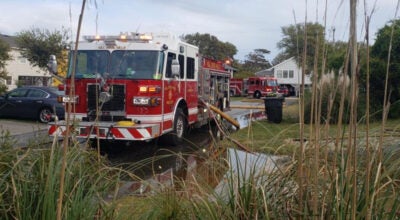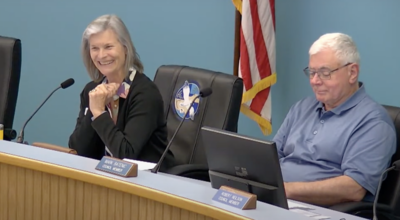School lunch costs increasing in Currituck
Published 8:30 am Thursday, July 12, 2018
When the new school year begins this fall, two increases will begin as well – the cost of school lunches, and the length of the school day.
It is typically with reluctance that the Currituck Board of Education raises meal prices, and this latest increase approved at the board’s late June meeting was no exception. With child nutrition director Angel Rodriguez at an out of town school nutrition workshop, school superintendent Mark Stefanik presented the item during the meeting.
Stefanik pointed out that the increase will be for lunches only, not breakfasts, and will bring the district closer to the U.S. Department of Agriculture (USDA) recommended price. While the board has the option to not raise prices, the superintendent explained that will result in a higher increase the following school year.
As presented, and approved by the board, lunch prices at the elementary level will go from $2.65 to $2.75, and at the middle schools and high schools the price will go from $2.75 to $3. Districts that charge less than the USDA recommended amount must show that increases are being put in place to get closer to the recommendation.
Board member Will Crodick questioned if the students who will be paying full price for their school lunch are subsidizing those students who receive free or reduced-price meals, and if the increase is related to that subsidy.
It doesn´t work like that, explained the superintendent, adding that the federal government reimburses the district (at 100 percent) for free and (at 40 percent and students pay the balance) for reduced price meals, as board member Dwan Craft added that the cost of a meal is based on the cost of the food not on the number of free and reduced meals.
Craft also repeated what she has said before, that when the cost of the meal goes up, participation goes down. Assistant superintendent Renee Dowdy reported that between 325 and 385 students at Currituck County High School have lunch at school, but that many students have modified schedules and so are not in school at lunch time.
Board member Janet Rose asked why the increase was different at the two school levels, and assistant superintendent Dr. Matt Lutz noted the increase is based on portion size.
Board members agreed that information needs to get out to parents, not only about the free and reduced-price lunches available to their children, but that qualifying for the program also opens up other discounts as well, such as waivers for SAT costs, a reimbursement to the school for students taking AP classes, as well as discounts for internet service at home from some providers.
WI-FI HOT SPOTS
Stefanik also announced that Currituck was selected to receive 400 free wi-fi hot spots at homes of high school students in the county, and that potentially another program may provide free internet service to the homes of middle school students. More information will be forthcoming.
LONGER SCHOOL DAYS
When options for making up for inclement weather days were running out this past school year, the board agreed to add time to the school day. That seemed like a good idea to some as a way in future years to build in a cushion of time so that teacher work days, or other days in the school year didn´t have to be forfeited to make up for days lost to bad weather. It also would provide stability to the school calendar, that typically gets changed a number of times during the year to make up for days when school has to be closed.
So a survey went out to parents and staff about adding ten minutes to the school day in the new school year. Depending on start and end times at each school, the extra minutes could come at the beginning or end of the day, or, Stefanik added, class bells could be adjusted in some schools, shortening time between classes and adding ten minutes of instructional time instead, without changing the start or end of the day.
The end result shouldn’t be a big deal, the superintendent added.
However, not everyone on the board agreed.
Although the survey showed that 56 percent of the respondents were OK with adding ten minutes, Rose said she heard from parents and staff who weren´t happy with the idea.
In addition, on a quick estimate by Stefanik that a total of 6,000 could have answered the survey, only 252 did, less than the last time the board asked for input about adding time to the school day.
Rose suggested that the full work days in the calendar for next year could be changed to early release, creating a half-day of make up time if needed and still giving staff a half-day for professional development. She added that making up for missed days can be addressed as needed during the school year.
However, Craft said that the board is continually looking for ways to improve test scores, which additional instructional time could address, and she did not support taking away professional development time from teachers and opportunity for teachers to meet with other teachers within their school and the district – something else the board has generally supported.
Rose went on to motion to not add the 10 minutes, which was supported by Crodick, but failed with opposition from Craft, board chairman Dr. Bill Dobney and board member Karen Etheridge.
Craft then motioned to add the 10 minutes which passed with support from Dobney and Craft.





